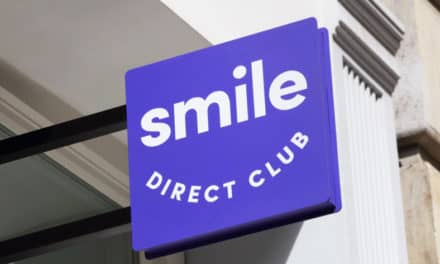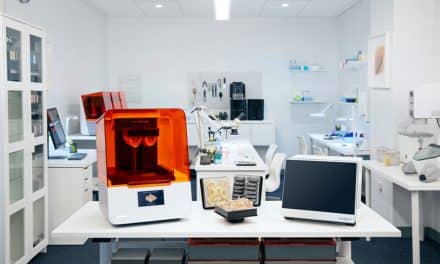The new robotic table-top aligner trimmer is designed to help practices streamline their 3D-printed aligner/retainer workflow, scale up production, and maximize profitability.
As more orthodontic practices produce in-office, 3D-printed aligners and retainers, the search is on for ways to streamline the workflow, scale up production, and maximize ROI. This past spring, Ortho-Automation introduced Trimlign, a small robotic table-top aligner trimmer at the AAO Annual Meeting where it won honorable mention in the 2022 Ortho Innovator Award competition. Orthodontic Products spoke to Andy Cordell, Ortho-Automation’s CEO and founder, to find out more about the Trimlign workflow, its open architecture, and the economics of hand trimming vs Trimlign.
OP: What sets Trimlign apart from other aligner trimming machines on the market?
Cordell: Trimlign was designed from the ground up to be an aligner trimming machine. Trimlign is small, powerful, and built to optimize production workflow for anyone fabricating aligners or retainers. There is no need for a fume extraction system for toxic smoke as found on laser-based systems. There is no need for user supplied compressed air. A minimal amount of workspace is required. Trimlign machines simply require a single 110v (230v Europe) outlet.
OP: In terms of software, what do users need to integrate Trimlign into their workflow?
Cordell: Our machine is open protocol and already integrated with all the major treatment planning software providers such as uLab, 3Shape, Onyxceph, SoftSmile, EasyRx/Cadflow.ai, Maestro3D, BlueSkyPlan, SimplyCeph, GuideMia—with Motion View and many others coming soon. This means that our customers may use their existing software or change to the software that best fits their needs at any time.
OP: What is the average trim time on a single aligner?
Cordell: The average trim time is 45 seconds. More importantly, the load and unload time for each aligner/retainer is 5 seconds. Trimlign users can count on averaging 60 seconds or less per aligner trim in continuous production.
OP: For someone just getting started with in-office aligner production, what should they know about incorporating Trimlign into their workflow?
Cordell: We provide the final missing piece of a true end-to-end, in-office digital workflow. By eliminating hand trimming, you can expect robotically precise trimming results every time and stop worrying about employees that may be injured by repetitive stress or cuts.
OP: For practices with established workflows, how can Trimlign change their workflow?
Cordell: Our customers are usually surprised with how easily we integrate and improve their current workflows. For example, most of our customers take the time to manually generate labels for individual aligner bags, and then again for the aligner kit given to their patients. We print these labels as part of our Trimlign Workflow Software process. This software is free with every Trimlign system. We also help you track the production state of each aligner for each patient.
OP: Let’s talk about the economics of hand trimming versus using Trimlign. How can using a robotic aligner trimmer help a practice with scalability and impact employee productivity?
Cordell: This is where Trimlign really shines. We’ve talked to many practices and labs that limit the number of cases they accept simply because of their concern about hand trimming. When hand trimming aligners, a typical employee can trim 192 aligners in a day, and that’s a hard day. With a Trimlign machine, the same, happier employee can trim 456 aligners in a day, or up to 1,320 aligners in a day if they operate three Trimlign machines.
Hand trimming is the bottleneck of scaling aligner production. For example, if a lab or clinic is hand trimming aligners, the average cost per aligner for the hand trimming step is $1.06, and the maximum number of aligners that could be trimmed in a year is 49,920. If you equip the same employee with three Trimlign machines, the trimming cost goes down to $0.14 per aligner, and their productivity is as high as 343,200 aligners/year. To match this with hand trimming, it would require seven full time employees. Most importantly, the cost of ownership is extremely low with no per trim, monthly, or annual fees.
OP: What should users know about training to use and maintaining the Trimlign machine?
Cordell: The training requirements to use and maintain a Trimlign machine are minimal. We include video-conference setup and initial training with each machine. And one big benefit of the machine being so small is that should anything happen, we will ship a replacement machine to you, and you ship your machine back in the same container. OP










